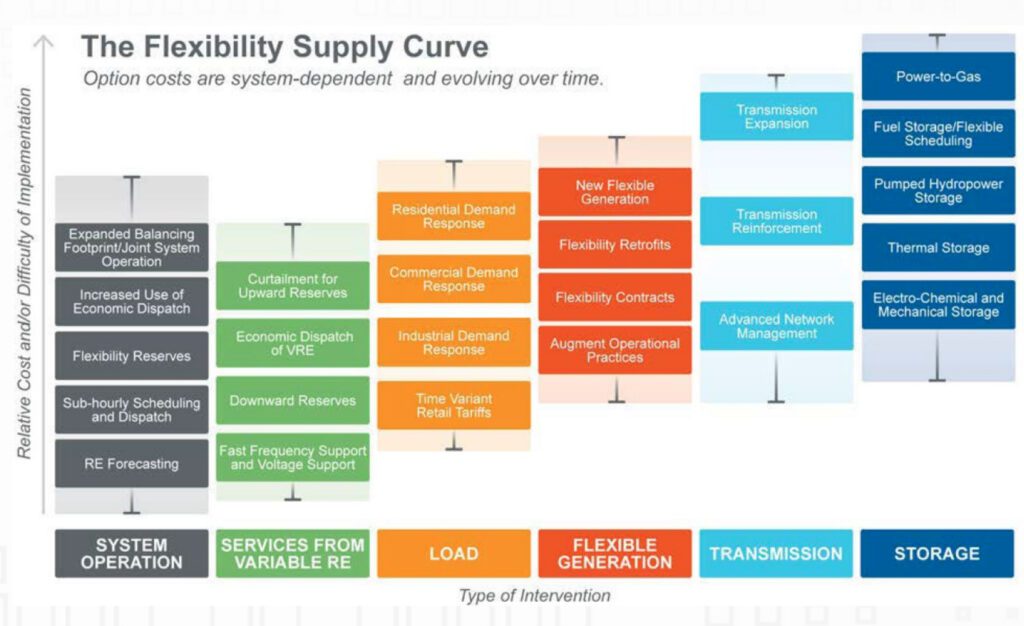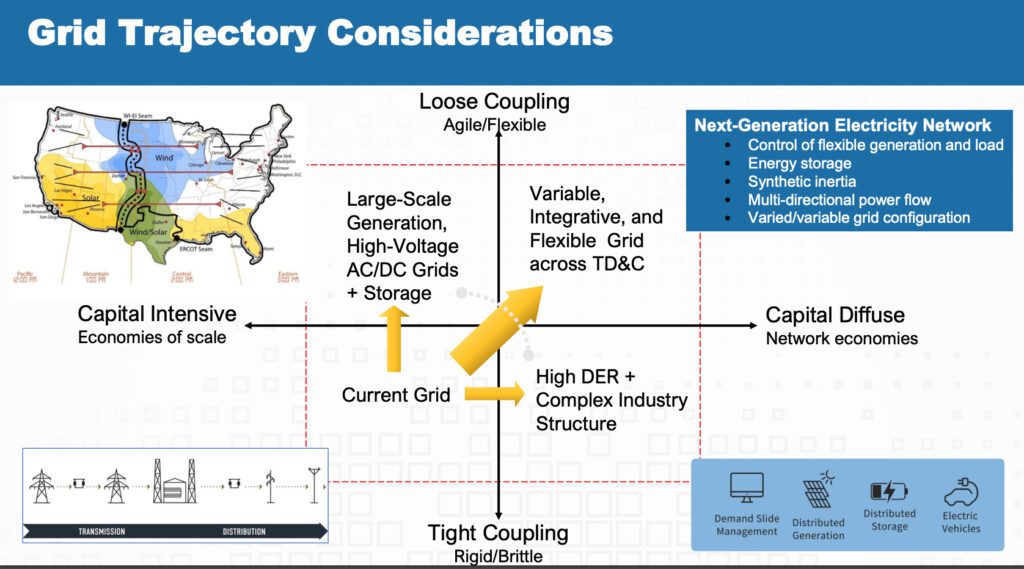DOE Envisions Future Grid's Transformation into a ‘Network’
The grid must accommodate more inverter-based generation and adequately handle the bi-directional flow of electricity, but it must also apply alternative grid configurations and coordinate planning and operations across multiple participants and jurisdictions. That’s the vision Michael Pesin, deputy assistant secretary for the Department of Energy’s (DOE’s) Advanced Grid Research and Development division, outlined in detail in a keynote speech for attendees at the Experience POWER conference and exhibition, which took place this week in San Antonio, Texas.
The vision is rooted in multiple priorities laid out by the Biden administration, which include ensuring the nation’s power infrastructure is “fully modernized, secure, resilient, and reliable,” said Pesin. Its urgency is also remarkable: “The goal is to have a pollution-free power sector by 2035 and a net-zero greenhouse gas [GHG] emission economy by 2050,” he noted.
However, it is already rife with challenges: “In the wake of major rolling blackouts, like the energy emergencies in 2020 and 2021, it is no secret to anyone that today’s electric grid is being pushed to do more than it was originally designed to do, and, designed 100 years ago, it is pretty much based on the same principles.” Pesin said.
Still, an opportunity for lasting change is clear, he said. “This is a once-in-a-lifetime opportunity to reshape the electric grid. We can architect it. We can change both our transmission and distribution system.”

Changing Fleet Transforming Power System’s Characteristics, Limits
Many emerging challenges are also related to the changing fleet of generation technology, which are fundamentally changing the operational characteristics and limits of the power system, he explained. “If you look at solar and wind generation, they are not the traditional rotating machines” like nuclear, hydro, coal, natural gas, geothermal, and concentrating solar power, which use synchronous generators to connect to the grid.” Variable resources typically have inverters to connect to the grid. The surge in their installation has highlighted challenges related to frequency support (for inertia), voltage support, grid forming capability, black start, protection issues with lower fault currents, and control system interactions and resonance, he said.
“The other challenge is that … we can’t truly dispatch most renewable resources. So increased use of variable generation will require new planning methods and increased system flexibility,” he said. That will involve new planning methods for assessing resource adequacy, resilience, and to account for flexible system operations. Solutions already emerging include improved system operation and forecasting. Variable renewable resources can also provide “services” such as fast frequency and voltage support, or curtailment for upward reserves. Significant interventions may also be offered from the load itself via demand response. System flexibility, while at a higher relative cost or difficulty of implementation, may include new flexible generation or flexibility-oriented retrofits.

“We can easily implement this suite of flexible iterations,” Pesin said. In addition, however, “we need more transmission because most of these renewable resources are not co-located at load centers.” That will involve interregional transmission through a high-voltage backbone and interties and regional transmission, which will include generation ties for large-scale solar or wind generation to distant load centers. But it will also involve local or metro transmission, which will need to transition away from one-way energy delivery systems and morph into “generation gathering” networks for solar, wind, and storage farms. And it will include transforming distribution systems, which Pesin said are increasingly required to manage myriad generation and load-modifying resources. Future grids will also need to accommodate customer/merchant-owned systems, including microgrids, and be capable of delivering energy services into wholesale markets.
Finally, “we need energy storage. Energy storage is critical in enabling hybrid integration of renewable,” said Pesin. “And we need all forms of energy storage, from seconds to support frequency to seasonal support for variations in seasonal wind and solar.” A National Renewable Energy Laboratory study showed that a decarbonized grid could need as much as 2,300 GWh of storage, up from 300 GWh installed today, he noted. As pivotal will be long-duration storage of more than 10 hours, far more than the four-hour systems available today.
A Dramatic Structural Transformation Will Be Necessary
These physical infrastructure additions could mean a “dramatic structural transformation” for the delivery system. But to bolster visibility and situational awareness of these new assets, as well as vastly boost their controllability, they must all be rooted on a digital foundation, Pesin said. The ultimate goal should be an “evolution of the electricity grid into an electricity network.” While the grid looks more like an interstate highway system, in the future, it’ll look more like an internet where you can control the flow of energy, he explained.
How to most efficiently and cost-effectively implement these changes is still under scrutiny by various efforts within DOE, including by the Advanced Grid Research and Development division, which falls under the DOE’s Office of Electricity.
However, Pasin offered two potential scenarios. One could involve installing large-scale generation of high-voltage AC/DC grids augmented with storage to accommodate renewables. The other envisions focusing on building out distributed energy sources (DERs) to feed all load locally. “The answer is that the future is somewhere in between,” Pesin said. “I don’t believe that in our lifetimes we’ll see DERs that are sufficient enough to support all local needs. So we still need to create a bulk system, we still need to have this strong transmission system that can supply energy from where it is produced to where it needs to be used.”

The solution ultimately will require strengthening interconnection between the Eastern and Western Interconnections, as well as building out microgrids to bolster the delivery system, said Pesin. “I look at microgrids as a key building block. [If we build] the grid with building blocks, if one block fails, you can rely on other blocks,” he explained. The next DER “wave” will also include integrating energy storage, electric vehicles, and other connected smart DERs. For now, “There’s a lot of theoretical work that needs to be done, but this is the future,” he said.
These goals may be ambitious, “but if you don’t set ambitious goals, you don’t succeed,” Pesin said. That’s where the markets and policy can help, he noted. “I’m excited about technology as an engineer … but technologies by themselves will not survive. We need to have markets that support [and adopt] these technologies,” he said. “But for markets to exist, you need to have the right policies in place.”
—Sonal Patel is a POWER senior associate editor (@sonalcpatel, @POWERmagazine).